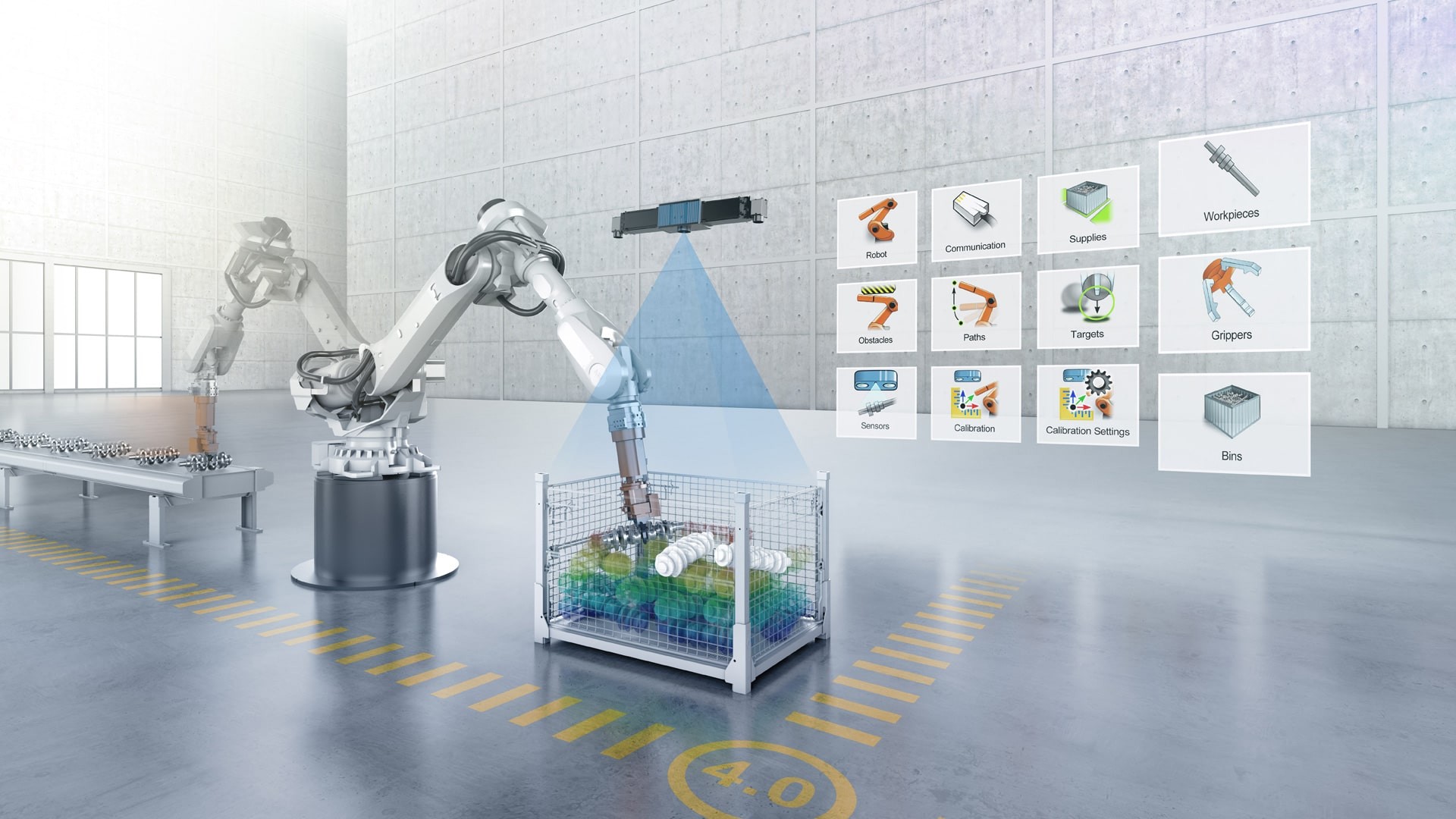
Bin picking made easy
“Bin picking” is among the most difficult disciplines in automation. Adjusting the parameters for reliable recognition and gripping of complex objects is demanding and requires expertise. LHRobotics.Vision, a software by Liebherr-Verzahntechnik GmbH from Kempten, now makes bin picking much easier for users through Artificial Intelligence (AI).
Bin picking is playing an increasingly large role in automation and is one of the most difficult tasks. The robot must recognize different objects chaotically arranged and, in some cases, with complex geometries. It must remove the object from the container without collision, bring it into an orientated position and transfer it to the machine. Setting up the interaction between the components, bin and gripper requires experience and expertise from the operator.
We want to enable ‘bin picking for everyone’.
The challenge of bin picking
This is why implementing bin picking solutions presents a great technological challenge for users. In most cases, it is not possible without support by the system manufacturer or integrator. But what if the system was able to learn and could adjust the parameters autonomously during setup or even during operation?
Liebherr-Verzahntechnik GmbH, a leading manufacturer of automation solutions, has been addressing this question and is refining its own software, LHRobotics.Vision. This software greatly simplifies parametrization for the user through Artificial Intelligence (AI). “We want to enable ‘bin picking for everyone’”, says Jürgen Groß, Sales Director for Cells & Flexible Manufacturing Systems and Automation Systems at Liebherr, summing up the aim of the project.
Liebherr is well-known as a manufacturer of complete robot cells with integrated bin picking software. In 2020, the Kempten based company decided to offer this software as an independent product. This means that it can also be used in plants with lines made by other manufacturers – which makes it attractive both for end users and for integrators.
Physics engine
A physics engine is a simulation program which models object interactions and collisions in a virtual world. It takes into account parameters such as gravity, elasticity, friction and conservation of momentum between colliding objects.
LHRobotics.Vision technology package
Alongside the graphically led, intuitive software, the technology package also includes a projector-based 3D camera system. This enables an object-oriented image recognition system by evaluating a 3D stereo vision recording. From the components’ 3D data and the interfering contours of the real bins, a point cloud is generated which serves as the basis for path planning for collision-free component picking. The desired picking positions on the component can be easily set graphically in the software, thus omitting the expensive teaching for the robot.
A special feature is the optional simulation tool, LHRobotics.Vision Sim. Using a physics engine, bin filling is simulated, after which a virtual point cloud is generated and evaluated. This enables the user to adjust the gripper geometry and optimize sequences purely virtually in order to achieve an improved emptying rate of even deeper bins – without risk and without expensive investment in test hardware.
AI enters the system

A new release of the LHRobotics-Vision software is planned for September 2021. Artificial intelligence and machine learning enable the automatic setup of new components in the bin picking process – a quantum leap in this technology. To achieve this, the system calculates the geometrical parameters of the components on the basis of real scan data and analyzes the resolution and the noise behavior of the sensor. Subsequently, test measurements are generated from these scan data, which are then used to determine the optimal setting parameters. This simplifies processes and saves time and costs. Since the system trains itself at each scan during setup and it creates the basis for the next step: Machine learning during operation.
We at Liebherr are familiar with the user side and contribute our expertise to the entire process. This makes us a genuine partner to the industry, and also well equipped for future developments.
Predestined for e-mobility applications
“Many users still shy away from bin picking, because it is apparently so complex and they don’t want to have to deal with this problem. With the new software release, we are now able to take these fears from our users and integrators”, says Jürgen Groß, who goes on to explain: “We see the paradigm shift in the entire industry as an opportunity as well; because of the upheaval in the automotive sector and the transition to e-mobility applications, we have to face the new challenges.”
Thus, Liebherr is now already using Vision systems with Artificial Intelligence for the process-reliable, automatic plugging of limp cable connections – for example, the module connectors of battery packs for e-vehicles. The changes brought about by e-mobility affect not only the drive train, but also body components, which are increasingly being manufactured in lightweight construction. Here too, Liebherr successfully uses LHRobotics.Vision for picking and removing metal components.
“In the future, increasingly complex part geometries and properties will present great challenges to bin picking. AI is a key technology, without which it will be almost impossible to meet these requirements”, says Jürgen Groß. “We at Liebherr are familiar with the user side and contribute our expertise to the entire process. This makes us a genuine partner to the industry, and also well equipped for future developments”, he summarizes.



